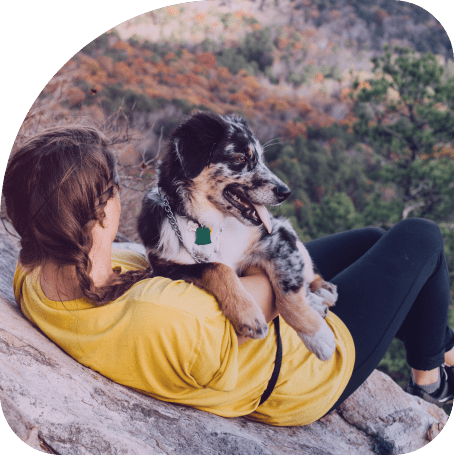Did you know that dogs can experience anxiety just like humans? Although we may try to minimize it as much as possible, it is most likely that your dog will experience anxiety at some point in their life. Unfortunately, this is part of a dog’s life in our modern world. However, what we do want to ensure is that disproportionate levels of anxiety are not left unchecked, so that they do not develop into larger anxiety disorders and other behavioural issues.
So, how can you know if your dog is feeling anxious? Here are some indicators:
- Shaking
- Whining
- Destructive behaviour
- Drooling
- Licking lips
- Panting
- Ears pulled down or back
- Excessive barking
- Whites of the eyes showing (whale eyes)
- Restlessness
- Repetitive or compulsive behaviours
- Defecating or urinating indoors
- Aggression
It is important to consider our dog’s body language holistically. Some of these indicators are also present in a non-anxious dog, however, ask yourself questions about the duration of these behaviours, how many indicators are present in your dog at one time, and if there is a clear reason as to why they’re demonstrating these behaviours (i.e. a thunderstorm or car ride).
Causes of Dog Anxiety
Anxiety in dogs can have a variety of causes, but some of the most common causes are:
Fear – this can be caused by loud noises, visual stimuli such as umbrellas or hats, new environments, people or animals, surfaces such as hardwood floors, and specific situations like the vet office.
Separation – it is estimated that separation anxiety affects 14 percent of dogs. These dogs are unable to regulate their emotions or find comfort when they are separated or left alone from family members. Often these dogs will display distressing emotions such as excessive barking or whining, destructive behaviour, and/or urinating and defecating in the house or crate.
Aging – as dogs age, they can develop various severities of cognitive dysfunction syndrome (CDS). Dogs with CDS display issues with memory, learning, perception, and awareness. CDS is similar to the early stages of Alzheimer’s disease in humans. This syndrome understandably leads to anxiety and confusion in our canine companions.
Treatment of Dog Anxiety
The best way to treat anxiety is to talk with your veterinarian. They can help you identify the type of anxiety your dog is experiencing and the possible causes and triggers. Your vet will help determine if the anxiety is becoming a chronic issue for your dog and if there are any medical conditions to rule out.
You and your veterinarian can then create a treatment plan. Typically, we see a combination of preventative strategies, positive-reinforcement training, and sometimes, medication or natural remedies.
Prevention and Management of Anxiety in Dogs
Body Language – learning what dog body language looks like and means is one of the most important steps in preventing and managing anxiety in our dogs. You can use this knowledge to create positive training moments and avoid negative experiences.
Exercise and Nutrition – consistent exercise and stimulation are critical for our dog’s physical, emotional and mental well-being. Without these two components, our dog’s development suffers and allows for more behaviour issues to arise.
Socialization – safe socialization can prevent anxiety in our canine companions by providing an opportunity to become well-adjusted to various kinds of environments, people, and dogs. Allowing our dogs to move at their own pace while socializing will increase our chances of having a confident dog who feels safe in the world.
Positive- Reinforcement Training – working on training with our dogs builds trust, reliability, and communication. It is both a preventative and management tool for anxiety, and also provides a safe space to practice alongside other canines. Ensuring we don’t punish our dogs during training is particularly important while working with anxious canines, as this can create more anxiety and be counterproductive.
Routines – providing structure and routine for our canine companions gives them predictability. This helps them feel more in control of their environment and outcomes, and provides them with comfort in the kinds of situations they can expect in their day-to-day life. Don’t forget, making sure to include rest time in these routines is crucial for our dogs well-being.
Getaway Plans – if you know your dog has a certain trigger, ensuring you have a plan to get away from the situation can be very important. For example, if your dog is anxious about being approached by strangers or other dogs while out on walks, plan an evacuation strategy. Teach your dog to do a nose touch to your hand or come to your side on command, this can give you a minute to assess the environment and exit calmly as needed.



